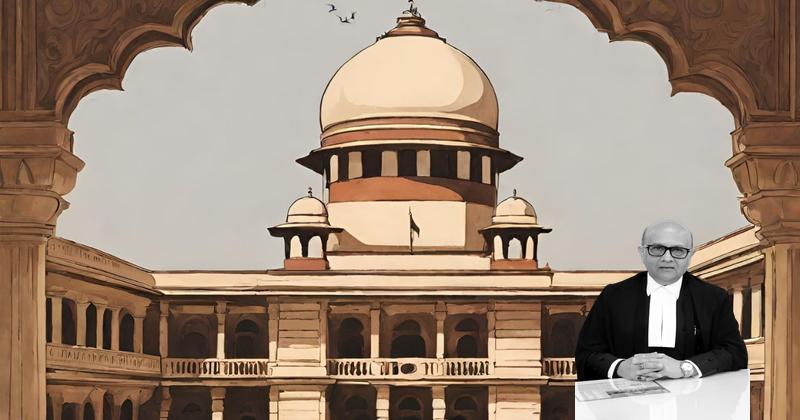The facts leading to the present appeals in nutshell are as under: 2.1 That the respondent no.3 herein – builder had taken loan from respondent no.2 – Bank for the development of the multi-storey housing project. On 25.02.2016, the DRT passed an order permitting the Bank to go ahead with the sale as proposed excluding flat to be identified and communicated by the borrower to the Bank by 29.02.2016 with full details of all purchasers to the bank officials on affidavit so as to enable the bank officer to exclude those flats, provided the remaining flats are sufficient for recovery of the dues. At this stage, it is required to be noted that the said agreement to sale was executed by the borrower without informing/obtaining any consent from the DRT as well as the Bank and the permission, if any, given to the borrower earlier obtained only to the seven flats which were already recognized by the DRT on 25.02.2016.
4
The borrower filed an application before the DRT praying for stay on all proceedings of the Bank pursuant to the auction notice dated 28.07.2016. Hence, any such transaction is declared as void.”
5 That thereafter e-auction was conducted by the Bank on 31.08.2016 in which the appellant also participated.
The Bank issued a letter to the appellant dated 20.09.2016 stating that the High Court has stayed the auction proceedings with respect to Flat No.6401 and that the respondent no.1 herein has paid the amount to the Bank as directed by the High Court. It was also stated that the right, if any, available to the respondent no.1 (original writ petitioner) would have been under Section 17 of the SARFAESI Act and not the writ petition filed by him. Hence, against the final decision of the High Court in the main writ petition allowing the same in favour of the respondent no.1 herein and rejecting the review application filed by the appellant, the appellant – successful auction purchaser has preferred the present appeals. Sirajudeen, learned Senior counsel appearing on behalf of the appellant has made the following submissions: (i) That the High Court has materially erred in entertaining the writ petition filed by respondent no.1 which was against the steps taken by the Bank under Section 13(4) of the SARFAESI Act namely against e-auction notice; (ii) That the respondent no.1 being the agreement to sale holder had no right title in the flat in question and therefore could not have filed the writ petition challenging e-auction notice on the basis of the agreement to sale in his favour; (iii) Even if the respondent no.1 had any right, if any, in that case also he had alternative efficacious statutory remedy available under Section 17 of the SARFAESI Act challenging the e-auction notice; (iv) That there was suppression of material facts on the part of respondent no.1 which was specifically pointed out by the appellant in the counter affidavit that at the time when the writ petition was filed and the interim relief was obtained the auction had taken place in which the appellant was declared the successful bidder; (v) That in fact the DRT in the earlier order dated 24.08.2016 declared the sale agreement in favour of It is further submitted by learned counsel appearing on behalf of the appellant that the High Court has not properly appreciated the fact that a sale agreement holder cannot seek redemption of a property under Section 91 of the Transfer of Property Act, 1882 and cannot be treated at par with an auction-sale purchaser under Section 54 of the Transfer of Property Act makes it clear that no interest /charge is created upon a property only by way of sale-agreement.
Also Read: https://newslaw.in/case-type/criminal/analysis-of-bail-granting-criteria-in-criminal-cases/
While opposing the present appeal learned counsel appearing on behalf of the respondent no.1 has vehemently submitted that in the present case Section 13(8) of the SARFAESI Act shall be applicable and therefore when the respondent no.1 being the agreement to sale holder of the flat in question agreed to pay/deposit the entire sale consideration the High Court has not committed any error in entertaining the writ petition under Article 226 of the Constitution of India challenging the e- auction notice. It is submitted that as per the catena of decisions unless the full sale consideration is paid; the sale deed is executed and/or the sale certificate is issued in favour of the auction purchaser there is no concluded sale.
He has also relied upon the decision of the Punjab and Haryana High Court in the case of Pal Alloys & Metal India Pvt. Allahabad Bank & Ors., 2021 SCC OnLine P&H 2733 as well as the decision of the Andhra Pradesh High Court in the case of M/s India Finlease Securities Ltd.
At the outset, it is required to be noted that what was challenged before the High Court by respondent no.1 in a writ petition under Article 226 of the Constitution of India was the e- auction notice which was pursuant to the action initiated by the Bank in exercise of powers under Section 13(4) of the SARFAESI Act. Therefore, the High Court has committed a very serious error in entertaining the writ petition under Article 226 of the Constitution of India challenging the e-auction notice issued by the Bank in exercise of power under Section 13(4) of the SARFAESI Act. That thereafter on 25.02.2016 the DRT passed the following order: “The Bank is directed to go ahead with the sale as proposed excluding the Flat to be identified and communicated by the Applicant to the Respondent Bank by 29.02.2016 with full detailed of all the Purchasers to the Flats Bank Officers on affidavit so as to enable the Bank Officer to exclude those Flats, provided the remaining Flats are sufficient for recovery of the dues. At this stage it is required to be noted that in the MoU dated 10.04.2016 between the borrower and the respondent no.1 in Clause No.4 it was specifically provided that first the party should obtain clearance of sale from DRT/SBH so that they can process with further agreement to sale.
Before the date of auction, on 24.08.2016 the borrower filed an application before the DRT praying for stay of all proceedings of the Bank pursuant to the auction notice dated 28.07.2016. Therefore, calculatively the respondent no.1 filed the writ petition before the High Court challenging the e-auction notice and that too after conducting of the e-auction on 31.08.2016 and the sale in favour of the appellant was confirmed.
However, it is required to be noted that what was challenged before the High Court was the e-auction notice dated 28.07.2016 which was already conducted on 31.08.2016. Now so far as the submission on behalf of the respondent no.1 that the respondent no.1 has paid/deposited the amount of sale consideration and now the respondent no.1 has died his heirs will have to vacate the flat in question and on the other hand the appellant shall be entitled to return the amount of Rs.6,45,250/- deposited at the relevant time being 25% of the auction sale consideration with interest is concerned, at the outset it is required to be noted that as such the transaction between the respondent no.1 and the borrower pursuant to the agreement to sale dated 16.06.2016 was absolutely illegal and behind the back of the Tribunal as well as the Bank and during the pendency of the proceedings before the Tribunal. Whatever the amount is already deposited by the respondent no.1/his heirs shall be returned to the respondent no.1 (now his heirs) with the interest at 9% from the date of such deposit till the actual date of return which shall be returned within a period of four weeks from today.
SHAH)……………………………J.
Case Title: G. VIKRAM KUMAR Vs. STATE BANK OF HYDERABAD (2023 INSC 475)
Case Number: C.A. No.-003152-003153 / 2023



